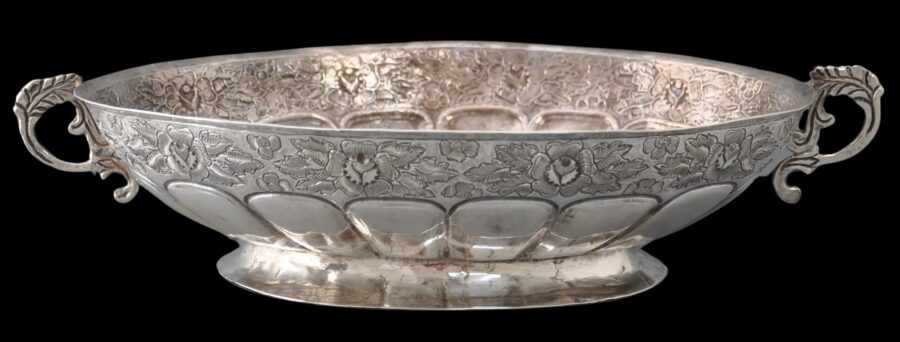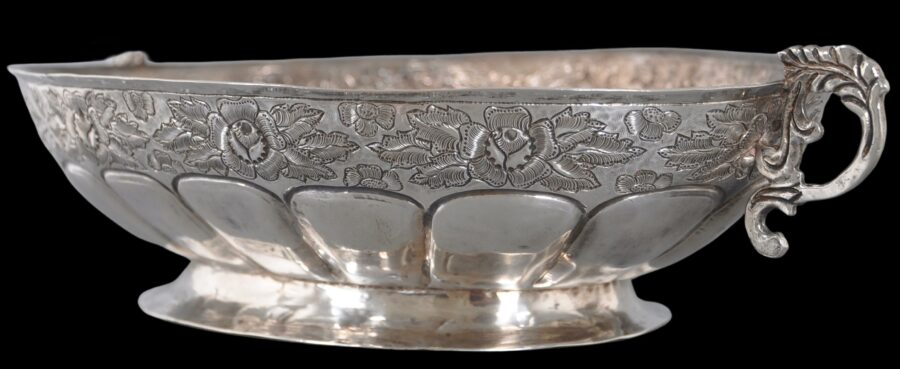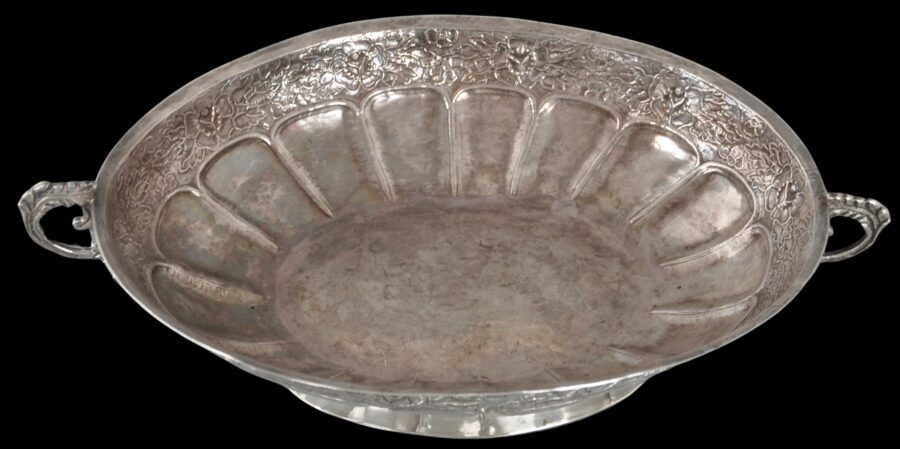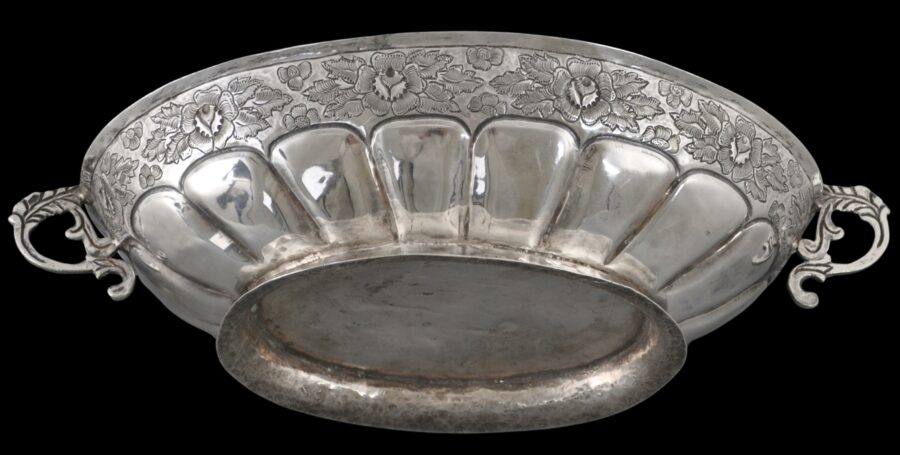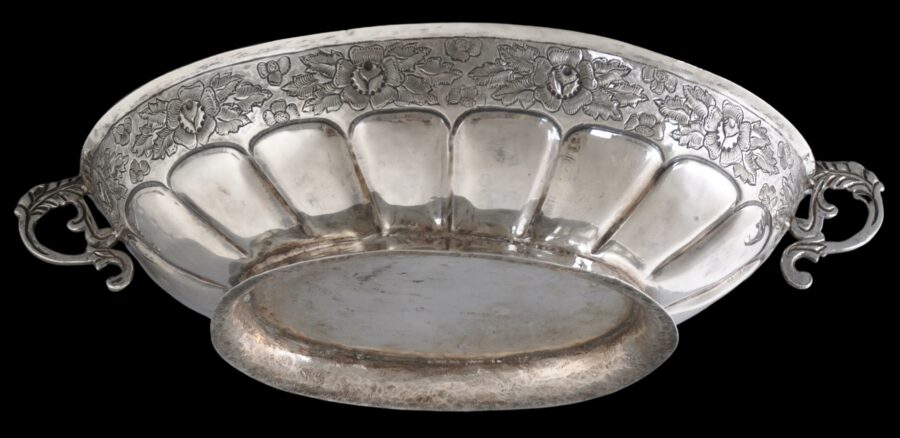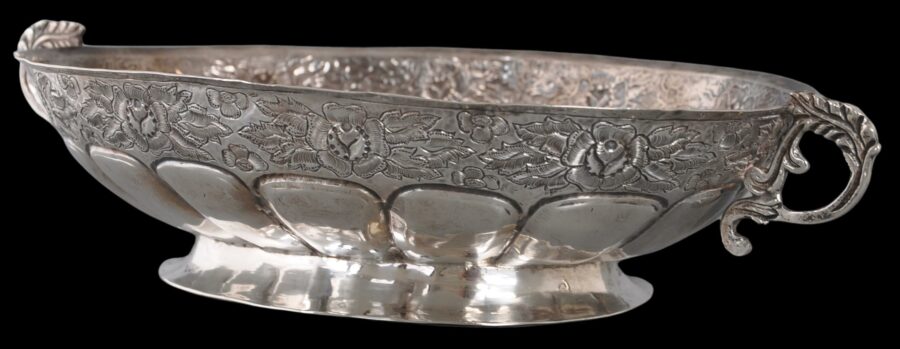This dish of hammered, high-grade silver is of shallow, oblong form. It sits on a low, flared, ring foot.
The sides have broad petal gadrooning in relief, and the upper register is engraved with repeated rose and leaf motifs.
There are two handles of cast silver attached to each end. Curiously, one handle is higher than the other. This seems deliberate and might relate to the original function of the bowl.
Related colonial silverware from the Philippines that dates to the 19th century is illustrated in Henkel et al (2009).
Thanks to the Galleon trade between Manila and Mexico, the colonial Philippines had access to an abundant supply of silver which was mined in South America.
The dish here most probably was used to serve small sweetmeats such as cakes, pastries or preserved fruits.
The dish is in excellent condition.
References
Henkel, D., et al, Land of the Morning: The Philippines and its People, Asian Civilisations Museum (Singapore), 2009.


